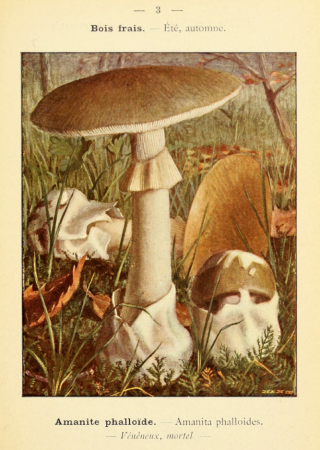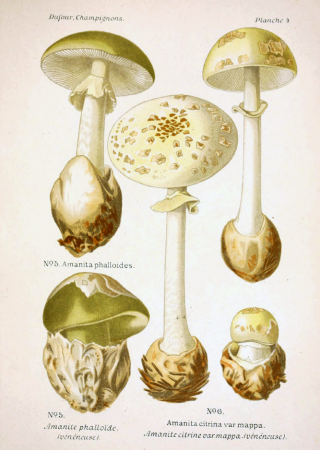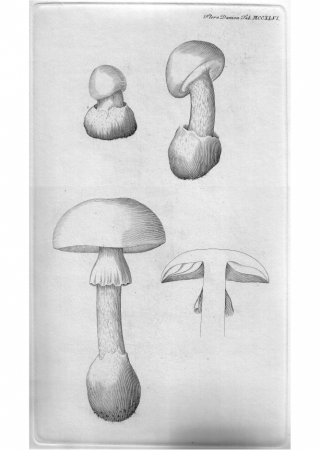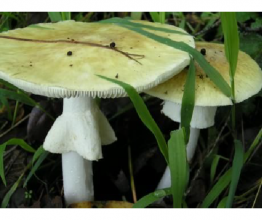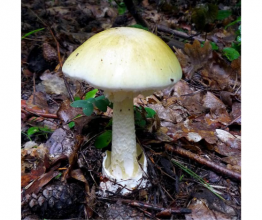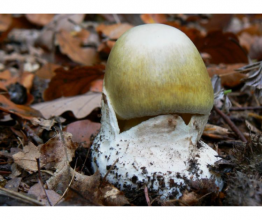Death cap
- ...food prepared with a death cap is extremely tasty?
- ...death cap poisoning manifests itself with a lengthy delay, by which time purgatives are no longer effective?
- ...treatment of death cap poisoning involving infusions with a high concentration of thioacetic acid was invented by the Czech doctor J. Herink?
- ...in eastern European countries, it is possible to mistake the death cap for the edible and highly prized Ceaser's mushroom (Amanita caesarea)?
- ...food prepared with the death cap may have been involved in the deliberate poisoning of the Roman emperor Claudius, but some experts claim that the described symptoms do not indicate this?
- ...Emperor Charles IV died ten days after eating food prepared with mushrooms? The described symptoms in this case do match death cap poisoning.
Basic information:
Division: - Basidiomycota
Class - Basidiomycetes
Maximum height - 20 cm
Distribution - almost cosmopolitan
Type of poison - phallotoxin and amatoxin
Distinguishing marks:
The fruiting body is medium sized, with cap 7-15 cm in diameter. It is gray-green to olive in color. Gills and ring are white. The mushroom grows from summer through fall in deciduous or mixed forests.
The death cap is one of the most poisonous mushrooms in the northern hemisphere. It grows throughout the entire temperate zone of Europe, Asia and North Africa. It was carried (probably with tree seedlings) to North America and Australia. This amanita is responsible for most mushroom poisonings, and even small doses can be very dangerous. Resistance to the poison varies among individuals, so specifying a fatal dose is difficult. The poison - amanitin, damages the liver and kidneys. Initial symptoms occur 8 to 48 hours after ingestion. In this phase, the person experiences fatigue, stomach nausea, dizziness, headaches and feelings of cold, even freezing. The nausea intensifies, stomach aches occur, accompanied by strong retching and watery diarrhea, leading to dehydration, and eventual circulatory failure. This is usually the immediate cause of death in children. If the patient survives this phase, his condition appears to improve (usually the fourth day after ingestion). In the second phase, the kidneys fail, and sometimes the liver as well. Death usually occurs four to twelve days after ingestion.

